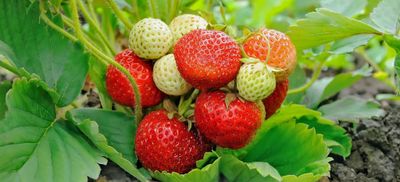Strawberry ‘Northeaster’ Info
This June-bearing strawberry, released by the U.S. Department of Agriculture in 1996, is suitable for growing in USDA plant hardiness zones 4 through 8. It has gained favor for its generous yields and large, sweet, juicy berries, which are delicious baked, eaten raw, or incorporated into jams and jellies. Northeaster strawberry plants reach heights of about 8 inches (20 cm.), with a spread of 24 inches. (60 cm.). Although the plant is grown primarily for sweet fruit, it is also attractive as a groundcover, along borders, or in hanging baskets or containers. Dainty white flowers with bright yellow eyes appear from mid- to late spring.
How to Grow Northeaster Strawberries
Prepare the soil ahead of time by working in a generous amount of compost or well-rotted manure. Dig a hole large enough to accommodate the roots, then form a mound in the bottom of the hole. Plant the strawberry in the hole with the roots spread evenly over the mound and the crown slightly above soil level. Allow 12 to 18 inches (12 to 45 cm.) between plants. Northeaster strawberry plants tolerate full sun to partial shade. They are fairly picky about soil, performing best in moist, rich, alkaline conditions, but they don’t tolerate standing water. Northeaster strawberry plants are self-pollinating.
Northeaster Berry Care
Remove all blooms the first year. Preventing the plant from fruiting pays off with a vigorous plant and healthy yields for several years to come. Mulch Northeaster strawberry plants to conserve moisture and prevent the berries from resting on the soil. Water regularly to keep the soil evenly moist but not soggy. Northeaster strawberry plants develop lots of runners. Train them to grow outward and press them into the soil, where they will root and develop new plants. Feed Northeaster strawberry plants every spring, using a balanced, organic fertilizer.
